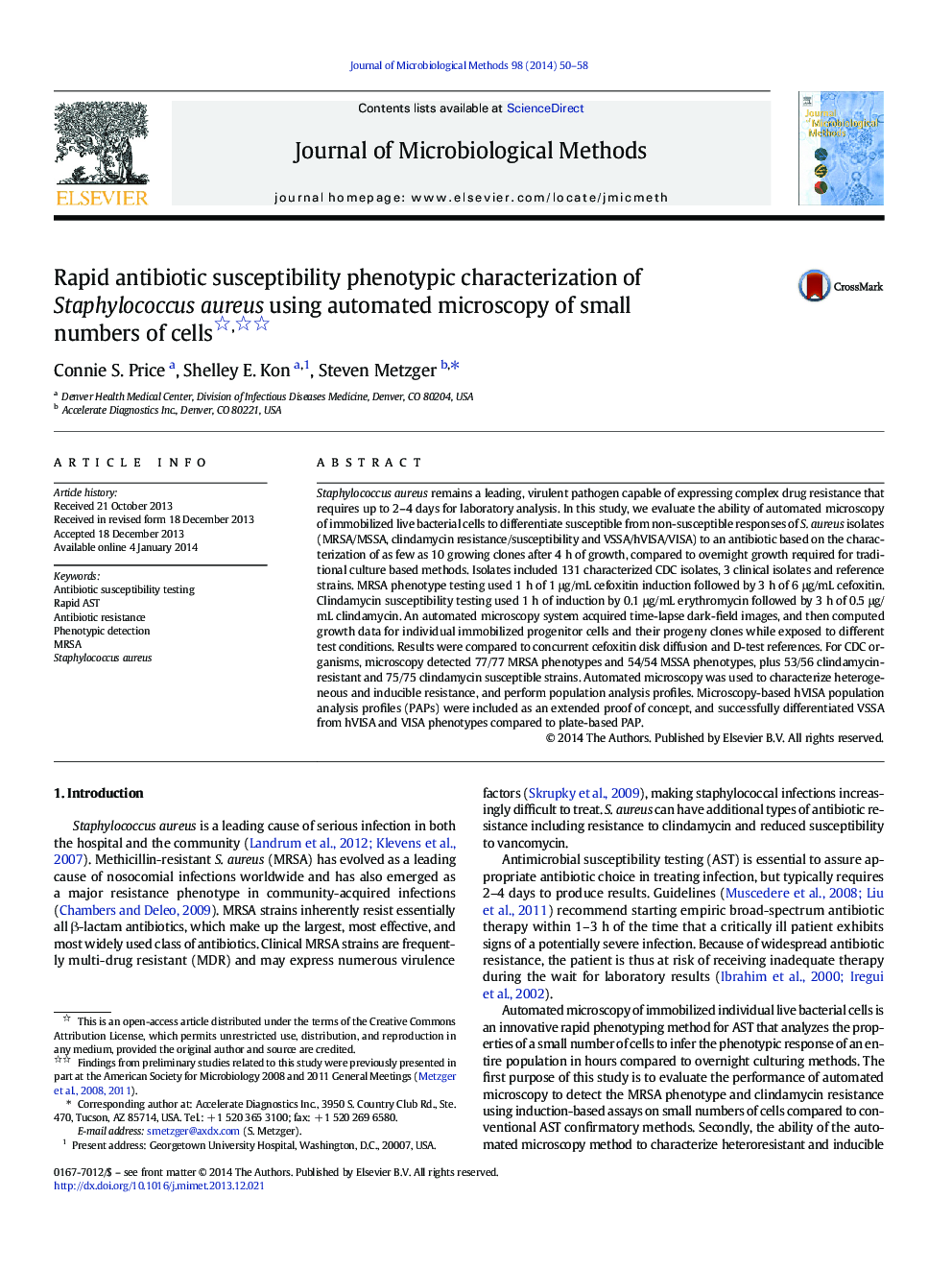| کد مقاله | کد نشریه | سال انتشار | مقاله انگلیسی | نسخه تمام متن |
|---|---|---|---|---|
| 8422386 | 1545945 | 2014 | 9 صفحه PDF | دانلود رایگان |
عنوان انگلیسی مقاله ISI
Rapid antibiotic susceptibility phenotypic characterization of Staphylococcus aureus using automated microscopy of small numbers of cells
ترجمه فارسی عنوان
ویژگی های فنوتیپ حساسیت سریع آنتی بیوتیک استافیلوکوک اورئوس با استفاده از میکروسکوپ خودکار از تعداد کمی از سلول ها
دانلود مقاله + سفارش ترجمه
دانلود مقاله ISI انگلیسی
رایگان برای ایرانیان
کلمات کلیدی
موضوعات مرتبط
علوم زیستی و بیوفناوری
بیوشیمی، ژنتیک و زیست شناسی مولکولی
بیوتکنولوژی یا زیستفناوری
چکیده انگلیسی
Staphylococcus aureus remains a leading, virulent pathogen capable of expressing complex drug resistance that requires up to 2-4 days for laboratory analysis. In this study, we evaluate the ability of automated microscopy of immobilized live bacterial cells to differentiate susceptible from non-susceptible responses of S. aureus isolates (MRSA/MSSA, clindamycin resistance/susceptibility and VSSA/hVISA/VISA) to an antibiotic based on the characterization of as few as 10 growing clones after 4 h of growth, compared to overnight growth required for traditional culture based methods. Isolates included 131 characterized CDC isolates, 3 clinical isolates and reference strains. MRSA phenotype testing used 1 h of 1 μg/mL cefoxitin induction followed by 3 h of 6 μg/mL cefoxitin. Clindamycin susceptibility testing used 1 h of induction by 0.1 μg/mL erythromycin followed by 3 h of 0.5 μg/mL clindamycin. An automated microscopy system acquired time-lapse dark-field images, and then computed growth data for individual immobilized progenitor cells and their progeny clones while exposed to different test conditions. Results were compared to concurrent cefoxitin disk diffusion and D-test references. For CDC organisms, microscopy detected 77/77 MRSA phenotypes and 54/54 MSSA phenotypes, plus 53/56 clindamycin-resistant and 75/75 clindamycin susceptible strains. Automated microscopy was used to characterize heterogeneous and inducible resistance, and perform population analysis profiles. Microscopy-based hVISA population analysis profiles (PAPs) were included as an extended proof of concept, and successfully differentiated VSSA from hVISA and VISA phenotypes compared to plate-based PAP.
ناشر
Database: Elsevier - ScienceDirect (ساینس دایرکت)
Journal: Journal of Microbiological Methods - Volume 98, March 2014, Pages 50-58
Journal: Journal of Microbiological Methods - Volume 98, March 2014, Pages 50-58
نویسندگان
Connie S. Price, Shelley E. Kon, Steven Metzger,
